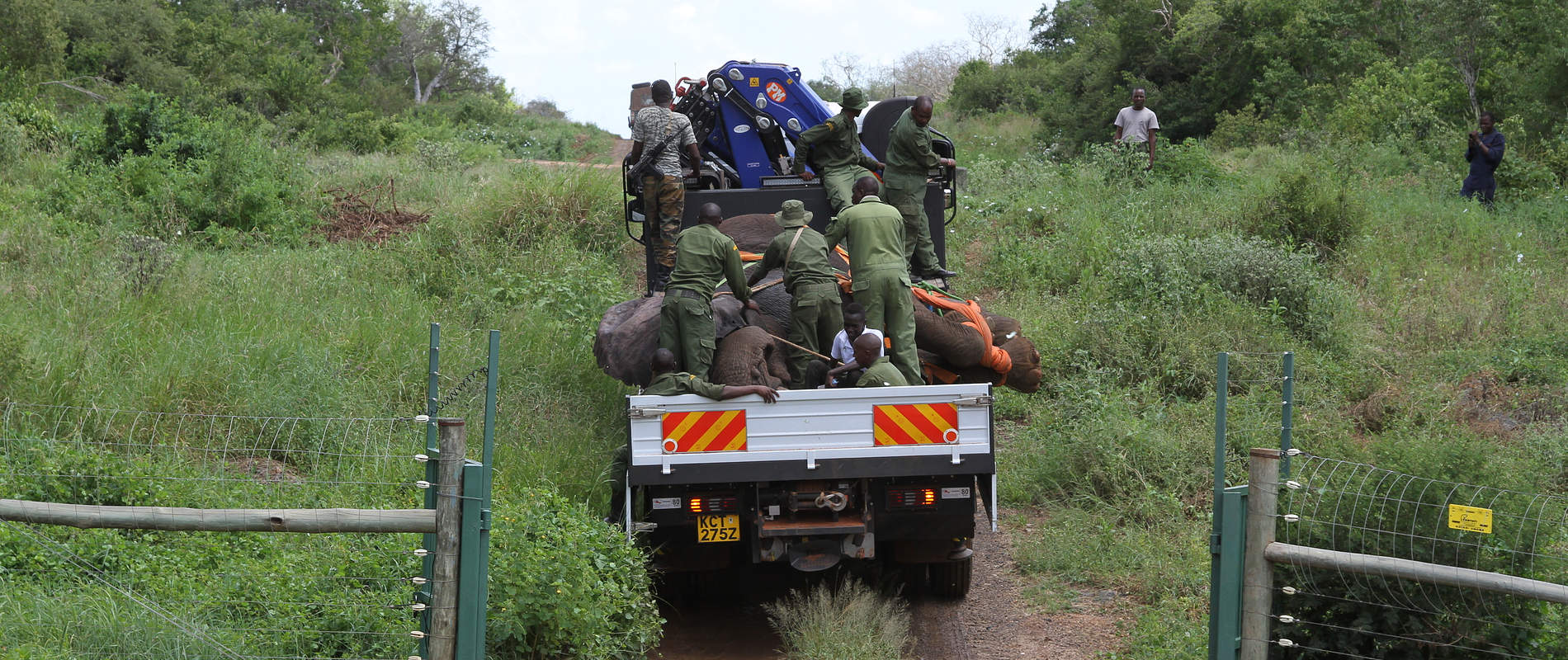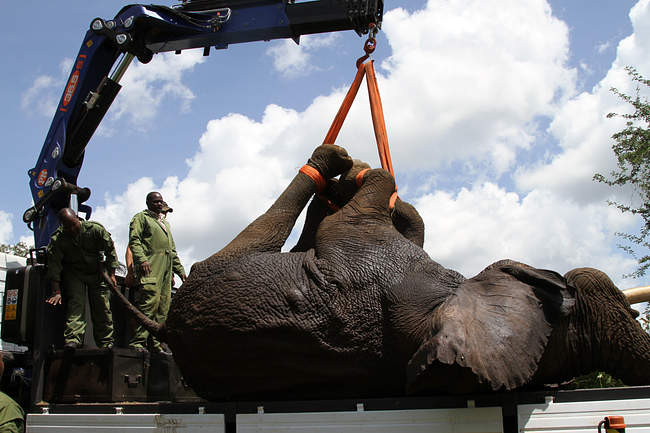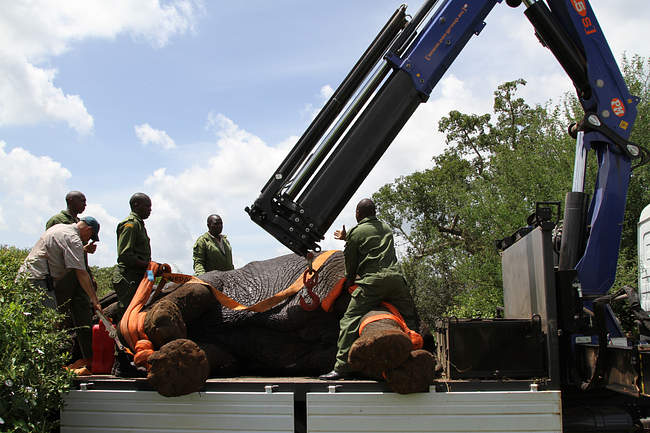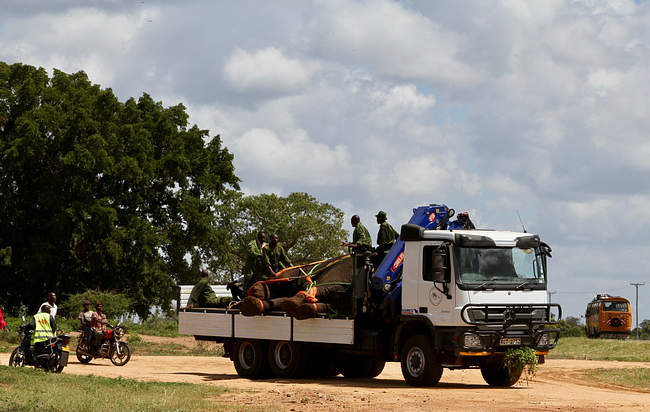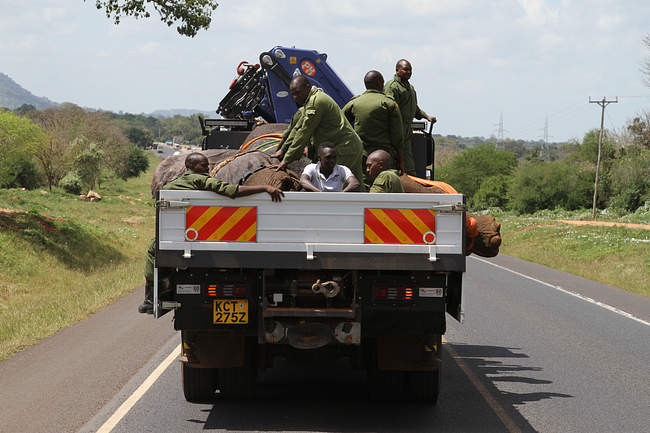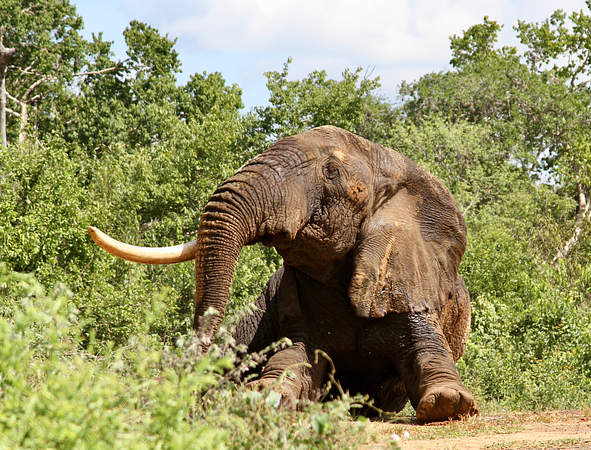Expanding human populations mean less space for wildlife, with human settlements increasingly shrinking migratory routes that have been used by elephants for millennia . Without a quick response and intervention, human-elephant conflict can escalate, risking the well-being of both elephants and people.
On 24th February, the SWT received a call concerning a bull elephant that had found himself on community land in the Kibwezi area. Surrounded by dwellings and people, immediate action was needed to move the elephant into a protected area to avert any risk of conflict or injury.
The Trust has witnessed a noticeable increase in human-wildlife conflict cases in recent years and, with that, has been investing in mitigation measures including fencelines, community education, helicopter deployment and, last year, the procurement of a custom-made elephant translocation vehicle with crane.
The location of this bull within the community ruled out the safe use of the helicopter to guide the elephant back into the protected area, a technique regularly employed by the Trust to great effect. Instead, the Trust’s new translocation vehicle, purchased for incidents of this nature, was required and with the SWT/KWS Tsavo Veterinary Unit, SWT helicopter and ground teams on hand, the operation could begin.
Using the helicopter, KWS vet Dr. Poghon was provided with an elevated platform from which to safely dart the elephant from the air, before landing close-by to assist in the loading effort. Using custom-fabricated padded straps, the team set about binding the sleeping elephant’s legs, while the truck was moved into position. The straps were then attached to the truck’s crane and this mighty bull, being monitored all the time by the vet, was carefully raised off the ground and gently loaded onto the truck’s flat-bed.
He was then driven into the Kibwezi Forest, an area protected by the SWT in partnership with the Kenya Forest Service, which backs onto the Chyulu Hills National Park and from there, into both the Tsavo West and Amboseli ecosystems. Critically, the SWT has erected, and maintains, a 93 km electric fenceline along the Tsavo West / Chyulu / Kibwezi boundary, with another 45 km fenceline installed last year by the Trust to the north of this, alongside KARI ranch, a 63,000 acre area now under the Trust’s protection, in partnership with KARLO, as part of the Saving Habitats initiative. This extended fence ensures a fixed divide between the areas held protected for wildlife and the surrounding communities, and in this case providing a wild border between this translocated elephant and people.
With this stunning bull now safe and out of danger, he can roam freely in the vast protected area to which he has been translocated, while the communities can resume normal life; a positive outcome for both a wild life and human life having been achieved in this instance.
Watch as he rises to his feet after the translocation and vanishes into the wild where he belongs.
